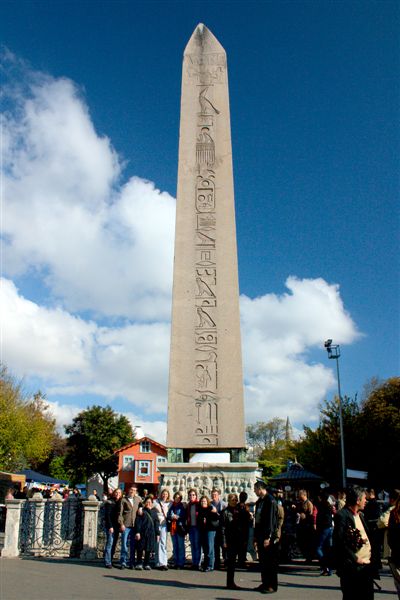|
Battle Of Romhány
The Battle of Romhány ''(Battle of Szátok or Battle of Érsekvadkert)'' is one of the last battles of the Rákóczi's War of Independence, Rákóczi War of Independence, which was fought on 22 January 1710 between Romhány and Szátok or Érsekvadkert in Nógrád County (former), Nógrád Counties of Hungary (1000–1920), counties. The Battle After the decisive defeat suffered in the Battle of Trenčín, the Kurucs were continuously pushed out of the western part of the country. At the turn of 1709-10, the Austrian armies continued their gradual advance in the territory of Nógrád County under the command of Count Johann von Sickingen. Francis II Rákóczi, Rákóczi's army, reinforced with Swedish and Polish troops was marching towards Érsekújvár,when they were intercepted by a 1,500-man cavalry unit led by von Sickingen, who underestimated the number of Hungarian troops. The Kurucs, with an 8-to-1 advantage, overwhelmed the Imperials and were close to victory, whe ... [...More Info...] [...Related Items...] OR: [Wikipedia] [Google] [Baidu] |
Romhány
Romhány is a village in Nógrád County, Northern Hungary Region, Hungary. It is located in the western part of the county, between the hills of Cserhát. The nearest town is Rétság , which is 10 kilometers away, while the county seat (Salgótarján)is 70 kilometers away. References Populated places in Nógrád County {{Nograd-geo-stub ... [...More Info...] [...Related Items...] OR: [Wikipedia] [Google] [Baidu] |
Rebellions Against The Austrian Empire
Rebellion is an uprising that resists and is organized against one's government. A rebel is a person who engages in a rebellion. A rebel group is a consciously coordinated group that seeks to gain political control over an entire state or a portion of a state. A rebellion is often caused by political, religious, or social grievances that originate from a perceived inequality or marginalization. ''Rebellion'' comes from Latin ''re'' and ''bellum'', and in Lockian philosophy refers to the Right of revolution, responsibility of the people to overthrow unjust government. Classification Uprisings which revolt, Resistance movement, resisting and taking direct action against an authority, law or policy, as well as organize, are rebellions. An insurrection is an uprising to change the government. If a government does not recognize rebels as belligerents, then they are insurgents and the revolt is an insurgency. In a larger conflict, the rebels may be recognized as belligerents ... [...More Info...] [...Related Items...] OR: [Wikipedia] [Google] [Baidu] |
1700s In The Habsburg Monarchy
Seventeen or 17 may refer to: *17 (number) * One of the years 17 BC, AD 17, 1917, 2017, 2117 Science * Chlorine, a halogen in the periodic table * 17 Thetis, an asteroid in the asteroid belt Literature Magazines * ''Seventeen'' (American magazine), an American magazine * ''Seventeen'' (Japanese magazine), a Japanese magazine Novels * ''Seventeen'' (Tarkington novel), a 1916 novel by Booth Tarkington *''Seventeen'' (''Sebuntiin''), a 1961 novel by Kenzaburō Ōe *'' Seventeen'' (''Kuraimāzu hai''), a 2003 novel by Hideo Yokoyama * ''Seventeen'' (Serafin novel), a 2004 novel by Shan Serafin Stage and screen Film * ''Seventeen'' (1916 film), an American silent comedy film *''Number Seventeen'', a 1932 film directed by Alfred Hitchcock * ''Seventeen'' (1940 film), an American comedy film *''Stalag 17'', an American war film *''Eric Soya's '17''' (Danish: ''Sytten''), a 1965 Danish comedy film * ''Seventeen'' (1985 film), a documentary film * ''17 Again'', a 2009 film whose work ... [...More Info...] [...Related Items...] OR: [Wikipedia] [Google] [Baidu] |
18th Century In Hungary
18 (eighteen) is the natural number following 17 and preceding 19. It is an even composite number. Mathematics 18 is a semiperfect number and an abundant number. It is a largely composite number, as it has 6 divisors and no smaller number has more than 6 divisors. There are 18 one-sided pentominoes. In the classification of finite simple groups, there are 18 infinite families of groups. In science Chemistry * The 18-electron rule is a rule of thumb in transition metal chemistry for characterising and predicting the stability of metal complexes. In religion and literature * The Hebrew word for "life" is ('' chai''), which has a numerical value of 18. Consequently, the custom has arisen in Jewish circles to give donations and monetary gifts in multiples of 18 as an expression of blessing for long life. * In Judaism, in the Talmud; Pirkei Avot (5:25), Rabbi Yehudah ben Teime gives the age of 18 as the appropriate age to get married (''"Ben shmonah esra lechupah"'', at ei ... [...More Info...] [...Related Items...] OR: [Wikipedia] [Google] [Baidu] |
18th-century Rebellions
The 18th century lasted from 1 January 1701 (represented by the Roman numerals MDCCI) to 31 December 1800 (MDCCC). During the 18th century, elements of Age of Enlightenment, Enlightenment thinking culminated in the Atlantic Revolutions. Revolutions began to challenge the legitimacy of monarchical and aristocratic power structures. The Industrial Revolution began mid-century, leading to radical changes in Society, human society and the Natural environment, environment. The European colonization of the Americas and other parts of the world intensified and associated mass migrations of people grew in size as part of the Age of Sail. During the century, History of slavery, slave trading expanded across the shores of the Atlantic Ocean, while declining in Russian Empire, Russia and Qing dynasty, China. Western world, Western historians have occasionally defined the 18th century otherwise for the purposes of their work. For example, the "short" 18th century may be defined as 1715� ... [...More Info...] [...Related Items...] OR: [Wikipedia] [Google] [Baidu] |
Kétbodony
Kétbodony is a village in Nógrád County, Hungary, with 438 inhabitants as of 2014. It is located in the southwestern part of the county, in a valley of the Cserhát River. Its distance from the capital Budapest is 70 kilometers, from Balassagyarmat 23, and from Vác Vác (; ; ; ) is a thousand-year old city in Pest county in Hungary with approximately 35,000 inhabitants. The archaic spelling of the name is ''Vácz''. Location Vác is located north of Budapest on the eastern bank of the Danube river, below t ... 30 kilometers. References Populated places in Nógrád County {{Nograd-geo-stub ... [...More Info...] [...Related Items...] OR: [Wikipedia] [Google] [Baidu] |
Turul
The Turul is a mythological bird of prey, mostly depicted as a falcon, in Hungarian tradition and Turkic tradition, and a national symbol of Hungarians. Origin The Turul is probably based on a large falcon. The Hungarian word ''turul'' meant one kind of falcon and the origin of the word is currently thought to be most likely Turkic (''Clauson 1972: 472''.) ('' Róna-Tas et al. 2011:2: 954-56)''), which is the language of origin of over 10% of words in modern Hungarian lexicon and the exonym "Hungarian" and the word "Hun". ''Toġrïl'' or ''toğrul'' means a medium to large bird of prey of the family Accipitridae, goshawk or red kite. In Hungarian the word ''sólyom'' means falcon, and there are three ancient words describing different kinds of falcons: ''kerecsen'' reek κερχνηίς( saker falcon), ''zongor'' gyrfalcon.html" ;"title="urkish ''sungur'' = gyrfalcon">urkish ''sungur'' = gyrfalcon(which survives in the male name ''Csongor'') and ''turul''. In the legend ... [...More Info...] [...Related Items...] OR: [Wikipedia] [Google] [Baidu] |
1932
Events January * January 4 – The British authorities in India arrest and intern Mahatma Gandhi and Vallabhbhai Patel. * January 9 – Sakuradamon Incident (1932), Sakuradamon Incident: Korean nationalist Lee Bong-chang fails in his effort to assassinate Emperor Hirohito of Japan. The Kuomintang's official newspaper runs an editorial expressing regret that the attempt failed, which is used by the Japanese as a pretext to attack Shanghai later in the month. * January 22 – The 1932 Salvadoran peasant uprising begins; it is suppressed by the government of Maximiliano Hernández Martínez. * January 24 – Marshal Pietro Badoglio declares the end of Libyan resistance. * January 26 – British submarine aircraft carrier sinks with the loss of all 60 onboard on exercise in Lyme Bay in the English Channel. * January 28 – January 28 incident: Conflict between Japan and China in Shanghai. * January 31 – Japanese warships arrive in Nanking. February * February 2 ** A general ... [...More Info...] [...Related Items...] OR: [Wikipedia] [Google] [Baidu] |
Obelisk
An obelisk (; , diminutive of (') ' spit, nail, pointed pillar') is a tall, slender, tapered monument with four sides and a pyramidal or pyramidion top. Originally constructed by Ancient Egyptians and called ''tekhenu'', the Greeks used the Greek term to describe them, and this word passed into Latin and ultimately English. Though William Thomas used the term correctly in his ''Historie of Italie'' of 1549, by the late sixteenth century (after reduced contact with Italy following the excommunication of Queen Elizabeth), Shakespeare failed to distinguish between pyramids and obelisks in his plays and sonnets. Ancient obelisks are monolithic and consist of a single stone; most modern obelisks are made of several stones. Ancient obelisks Egyptian Obelisks were prominent in the architecture of the ancient Egyptians, and played a vital role in their religion placing them in pairs at the entrance of the temples. The word "obelisk" as used in English today is of Greek rathe ... [...More Info...] [...Related Items...] OR: [Wikipedia] [Google] [Baidu] |
Monument
A monument is a type of structure that was explicitly created to commemorate a person or event, or which has become relevant to a social group as a part of their remembrance of historic times or cultural heritage, due to its artistic, historical, political, technical or architectural importance. Examples of monuments include statues, (war) memorials, historical buildings, archaeological sites, and cultural assets. If there is a public interest in its preservation, a monument can for example be listed as a UNESCO World Heritage Site. The ''Palgrave Macmillan, Palgrave Encyclopedia of Cultural Heritage and Conflict'' gives the next definition of monument:Monuments result from social practices of construction or conservation of material artifacts through which the ideology of their promoters is manifested. The concept of the modern monument emerged with the development of capital and the nation-state in the fifteenth century when the ruling classes began to build and conserve what w ... [...More Info...] [...Related Items...] OR: [Wikipedia] [Google] [Baidu] |
Nové Zámky
Nové Zámky (; ) is a town in Nové Zámky District in the Nitra Region of southwestern Slovakia. Geography The town is located on the Danubian Lowland, on the Nitra River, at an altitude of 119 metres. It is located around 100 km from Bratislava and around 25 km from the Hungary, Hungarian border. It is a road and railway hub of southern Slovakia. The town lies in the temperate zone and has a continental climate. Annual average temperature reaches around , with the warmest month being July with an average of and the coldest January with . Average annual precipitation is 556 mm. History The town has a distinguished history. From the second half of the 10th century until 1918, it was part of the Kingdom of Hungary. A fortress was built as a defence against the Ottoman Empire, on the site of an older settlement in the years 1573–81. Between 1589 and 1663, the settlement was the seat of the Captaincies of the Kingdom of Hungary#Captaincy of Lower Hung ... [...More Info...] [...Related Items...] OR: [Wikipedia] [Google] [Baidu] |




